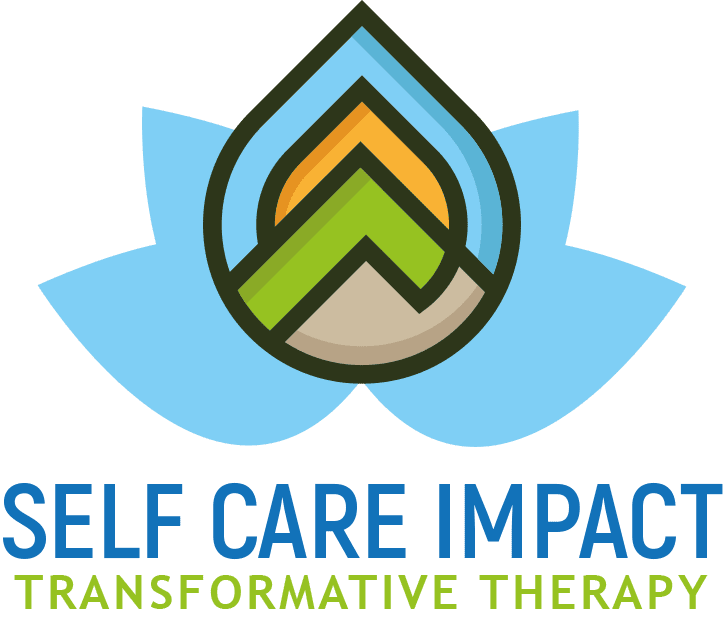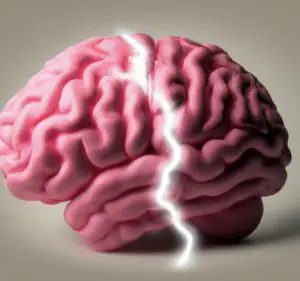If you have experienced Trauma in your life, then your brain has changed to try to keep you safe. You may experience more fear, you’ll have more frequent memories, you may even have PTSD. These evolutionary responses were more beneficial in ancient history but nowadays they have more downside.
Let’s explore what happens during traumatic events, how your brain undergoes a series of rapid changes to help you deal with the immediate threat, and how it is changed long term by serious threats.
These responses, while protective in the moment, can sometimes lead to long-term psychological challenges. Understanding this stuff is the first step to fully recovering from traumatic events.
Surviving the Danger
What is the first thing your brain wants to do? Understandably the main thing it wants to do is to help you survive! This involves a couple different steps:
Sound the Alarm! A perfect example of an evolutionary response is sounding the alarm Your brain sounds the alarm and your body creates a strong physical and mental response for fight or flight
How Much Danger? – Your brain has to process danger and create an appropriate level of fear for the significance of the danger. Should you stay and fight or run away? Whatever the decision, dangerous experiences will create strong memories.
Adrenaline Response – Trauma and perceived threats initiate a rapid response in the brain, leading to the release of adrenaline (also known as epinephrine) to prepare the body for immediate action. Adrenaline causes your heart rate and breathing to increase and blood is diverted from digestion to movement muscles.
Return to Normal? – After the threat or trauma has passed, the body usually returns to its baseline state, primarily due to the parasympathetic nervous system’s efforts to counteract the sympathetic response. This is sometimes called the “rest and digest” response. However, with prolonged or recurrent trauma, the body might maintain a heightened state of alertness. In the modern world, where threats are often psychological or chronic, this response can sometimes be maladaptive, leading to conditions like chronic stress, anxiety, and post-traumatic stress disorder (PTSD).
Bad Memories – Trauma leads to intense emotional and physiological responses, deeply embedding certain experiences into our memory. When we refer to “bad memories” associated with trauma, we’re often talking about the vivid, distressing recollections of these traumatic events. The brain’s response to trauma, both chemically and functionally, prioritizes the encoding and retention of traumatic events. While this has evolutionary advantages for survival, it can lead to persistent and distressing memories in the aftermath of traumatic experiences.
Your Brain Can Change!
We all know that our bodies will heal physical wounds to prevent infection and maintain functionality. It logically follows that our mind would want to heal psychological wounds to preserve its integrity and function. Over evolutionary time scales, individuals who could recover from distressing or traumatic experiences had a better chance of survival and reproduction. Experiences, both good and bad, shape our neural pathways. Naturally over time, the brain can form positive neural pathways that support healing.
The brain, like the rest of the body, aims to maintain a stable internal environment, known as homeostasis. Trauma can disrupt this equilibrium, leading to heightened stress. The brain seeks to restore this balance, ensuring its optimal operation and the well-being of the individual.
Your brain can change! The brain’s ability to reorganize and adapt, known as neuroplasticity, supports the idea that the mind seeks healing. When exposed to new experiences or learning, the brain can form new connections or strengthen existing ones. This adaptability is a foundation for healing and recovery.
Why is Trauma Stuck in Your Mind?
Traumatic experiences often “get stuck” in your mind.They are so overwhelming that they exceed our normal coping abilities. When the brain cannot adequately process or integrate these experiences into our standard memory structures, they can remain “unprocessed.” Unlike regular memories, which tend to fade or change over time, these unprocessed memories remain vivid and can be easily activated by triggers.
During a traumatic experience, your brain releases stress hormones like adrenaline and cortisol. These hormones can enhance memory encoding, making certain aspects of the traumatic event deeply imprinted in the memory. This is an evolutionary adaptation; remembering dangerous or life-threatening situations had survival benefits for our ancestors. I.E. Don’t ever do that again. In today’s more complex world this is not always helpful.
How Does My Brain Store Trauma?
It’s worth noting that memory storage is a complex process and is distributed across various networks in the brain. Traumatic memories are not stored in one isolated “spot” but rather as interconnected neural networks spanning these regions. These memories involve a combination of sensory data (like sights, sounds, and smells), emotional responses, and cognitive interpretations of the event. When something triggers a traumatic memory, these interconnected networks activate, which can lead to intense emotional and physiological reactions.
There are 4 primary brain regions that help create and store your traumatic memories, The Amygdala, Hippocampus, Prefrontal Cortex, and the ACC.
Amygdala
The amygdala is the emotional processing center of the brain and plays a crucial role in the formation of emotional memories. It’s particularly sensitive to fear and threat detection. During a traumatic event, the amygdala becomes highly activated, encoding the emotional and sensory details of the experience. This heightened state ensures that the traumatic memory is deeply imprinted, possibly as an evolutionary response to remember and avoid future threats.
Hippocampus
The hippocampus is central to the formation, organization, and retrieval of memories. It helps contextualize memories by linking them to a specific time and place. During trauma, the surge in stress hormones can impact the functioning of the hippocampus. This might result in traumatic memories being stored in a fragmented manner rather than a cohesive narrative. Some research suggests that prolonged exposure to severe trauma and stress can even lead to a reduction in the volume of the hippocampus.
Prefrontal Cortex
This region is associated with executive functions, including reasoning, decision-making, and self-control. During traumatic events, the prefrontal cortex might become less active, which can contribute to feelings of detachment or dissociation during the event. This reduced activity can affect how the memory of the trauma is processed and stored.
Anterior Cingulate Cortex (ACC)
The ACC is involved in emotional regulation and processing. It also plays a role in detecting errors or conflicts. Traumatic experiences can influence the functioning of the ACC, affecting how an individual may emotionally respond to and recall the traumatic memory.
The ACC also is involved with pain and reward processing. It helps you feel the sensory part of pain and creates the proper emotional response like distress. Likewise it does something similar with rewards, helping you anticipate a reward and creating a response behavior like celebration.
How Can I Help My Brain Heal from Trauma?
The human brain is remarkably resilient and adaptive, often referred to as having “neuroplasticity.” This term describes the brain’s ability to reorganize and adapt by forming new neural connections. This plasticity plays a crucial role in healing from trauma. While the brain has a remarkable capacity to heal, the process can be slow and may require external support. Therapeutic interventions, social connections, and self-care practices can all facilitate this healing journey. If someone is struggling with the aftermath of trauma, it’s crucial to seek professional help to guide the recovery process. Here’s how the brain can change or heal after a traumatic event:
Rebuild Your Memories
Therapies like Eye Movement Desensitization and Reprocessing (EMDR) help individuals reprocess or safely rebuild traumatic memories. Gradually and carefully exposing oneself to the memories or triggers of trauma, in a controlled therapeutic setting, can help desensitize and reduce the fear response. This can transform the way these memories are stored and perceived, making them less distressing.
Build New Brain Pathways
Just like muscles can strengthen with exercise, new neural pathways can form and strengthen with mental exercises, experiences, and therapeutic interventions. Engaging in new activities, learning new skills, or undergoing therapeutic interventions can spur the creation of these pathways.
Prune Old Brain Pathways
The brain can weaken or eliminate unnecessary or harmful neural connections through a process known as “synaptic pruning.” This means that over time, and with appropriate interventions, the brain can diminish the strength of traumatic memories and reactions.
Establishing Safety and Stability
Before deeper healing can occur, it’s essential to establish a sense of safety and stability. This can involve removing oneself from a traumatic environment, building supportive social connections, or developing coping skills. When the brain perceives safety, it’s better positioned to process trauma.
Trauma Counseling in the Denver Area
If you need help with trauma counseling, we are here for you. We invite you to call us at 720-551-4553 for a free 20-minute phone consultation with a marriage specialist. You can find more information about our Trauma Therapy services by clicking this link.
Self Care Impact Counseling envisions a new age of counseling for adolescents, adults, couples & groups that makes a REAL difference with core values of GROWTH | BALANCE | COMPASSION | INNER HARMONY.

